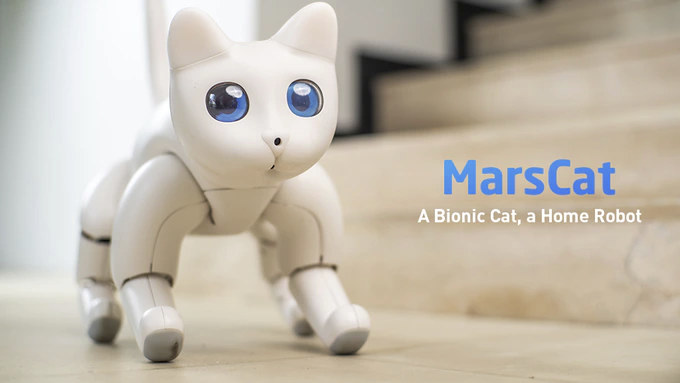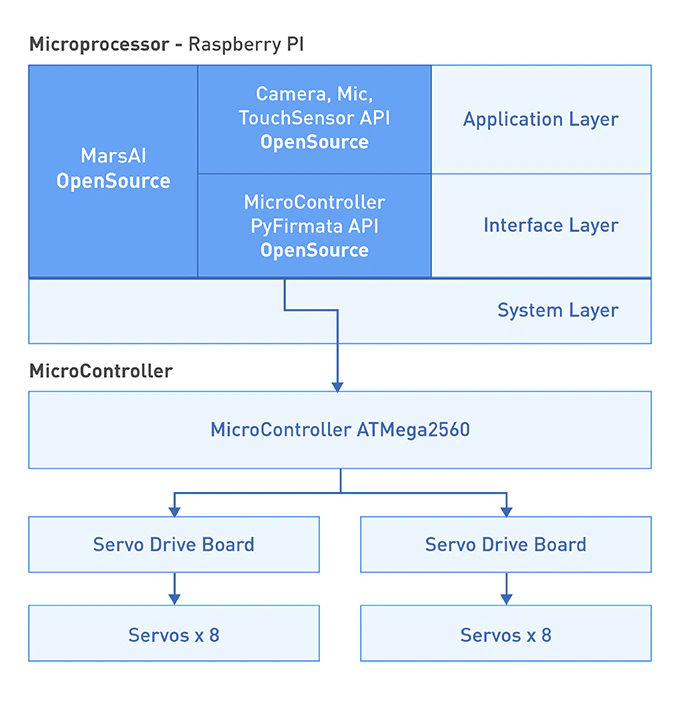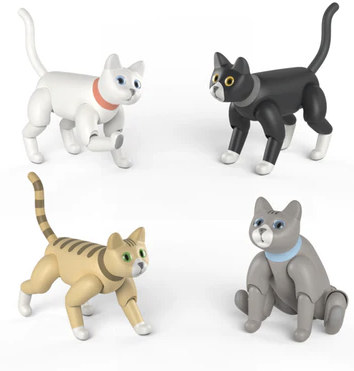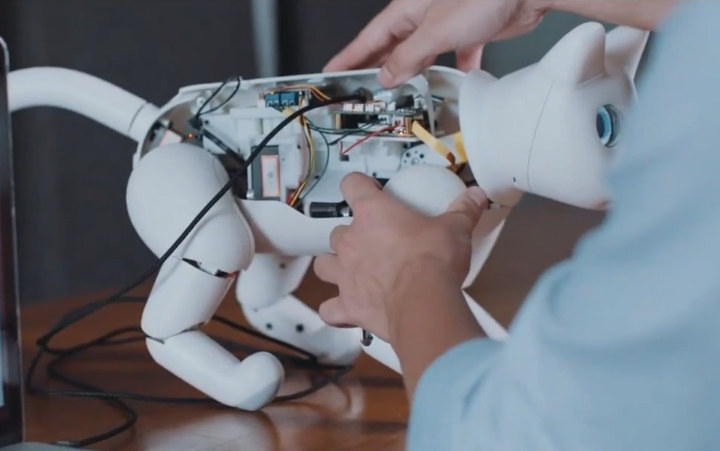Elephant Robotics MarsCat is a robotic cat that tries to mimic the behavior of actual cats through artificial intelligence. It can have a life of its own roaming the house, and you can also interact with it as it will play with toys/teasers through its camera, and you can send voice command to ask it to walk, run, look at you, be quiet. etc… but the trick is that it may not always obey like a real cat, and its personality will evolve depending on how you interact with it.
Beside being a bionic pet, MarsCat can also be used to teach/learn robotics as the company will release an open-source SDK allowing you to change the Python code running on the Raspberry Pi 3 board powering the cat, and access API’s to control the camera, microphone, touch sensors, as well as the 16 servos connected to a Microchip ATMega2560 MCU via two servo boards. Visual programming for the robot will be made possible through Scratch 3.0 program.

MarsCat hardware specifications:
- SBC – Raspberry Pi 3 Model B SBC with quad-core Cortex-A53 processor and 1GB RAM
- Eyes – 2x 1.5″ 0LED displays with 128×128 resolution
- Camera – 5MP camera with 72° FOV
- Audio – Speaker and microphone
- Connectivity – 802.11b/g/n/ac WiFi 5 and Bluetooth 4.2 (on RPi 3) only used during programming.
- USB – 1x USB Type-C port for charging and programming
- Joints – 16 servos: 2x for the head, 2x for the tail, and 3x for each leg

- Sensors – Time-of-Flight (TOF) sensor, 6x capacitive touch sensors, gyro
- Misc – Power button
- Power Supply
- 5V DC/3A via USB Type-C port; 3 hours for a full charge
- 6,800mAh/7.4V battery good for 2 hours (active motion) or up to 5 hours (regular motion)
- Consumption – ~ 20 Watts
- Dimensions
- Lie down – 388 (L) x 268 (W) x 240 (H) mm without tail, 578 x 268 x 240 mm with tail
- Stand – 372 x 200 x 329 mm without tail, 503 x 200 x 329 mm with tail
- Weight – 2.5 kg
- Materials – Plastic, glass (eyes), rubber (ear, neck, and paw)
- Color – White, grey, ginger, or black
The Raspberry Pi 3 SBC runs 4 main threads to control the robot
- Vision – qr_code, object_recognition, face_recognition and moving object recognition
- Voice – commands, and volume
- Sensors – gyro sensor, touch sensor, and distance sensor
- AI – process all data and do the output actions. The action will include movements of 16 motors and kinematics + eye-display + sound effect.
Based on the diagram below, I understand the robot will not be fully open source, but you’ll have access to the source code and API/s in the dark blue boxes to control most functions of the robots.


Jean-Luc started CNX Software in 2010 as a part-time endeavor, before quitting his job as a software engineering manager, and starting to write daily news, and reviews full time later in 2011.
Support CNX Software! Donate via cryptocurrencies, become a Patron on Patreon, or purchase goods on Amazon or Aliexpress






